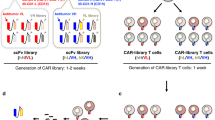Abstract
THERE is no definitive teleological interpretation of the involvement of H–2 determinants in the recognition by mouse cytolytic T cells of various non-H–2 antigens1,2. While it is generally believed that T-cell immunity against non-H–2 structures (determined, for example, by infectious agents) may benefit from the known special reactivity of T cells against non-self H–2, other interpretations have been proposed, such as the possibility that H–2 is necessary for cytolysis at a postrecognition stage as the “weak point” of the target-cell surface3. A prediction of this hypothesis is that target cells devoid of H–2 should be resistant to T-cell-mediated cytolysis. We have tested this prediction using male germinal cells, embryonal carcinoma and virus-transformed testicular cells as targets, in the presence of the lectin concanavalin A (con A). Con A binding apparently by-passes4 the normal recognition system, so that lack of recognition of H–2 on H–2-less target cells would not be a limiting factor for cytolysis. We found that H–2-less embryonal carcinoma cell lines, including one with barely detectable levels of F9 antigen, were sensitive to lysis, strongly suggesting that at a postrecognition stage H–2 is not required for T-cell-mediated cytolysis.
This is a preview of subscription content, access via your institution
Access options
Subscribe to this journal
Receive 51 print issues and online access
$199.00 per year
only $3.90 per issue
Buy this article
- Purchase on Springer Link
- Instant access to full article PDF
Prices may be subject to local taxes which are calculated during checkout
Similar content being viewed by others
References
Shearer, G. M., Eur. J. Immun., 4, 527–533 (1974).
Zinkernagel, R. M., and Doherty, P. C., Nature, 248, 701–702 (1974).
Forman, J., J. exp. Med., 142, 403–418 (1975).
Forman, J., and Möller, G., J. exp. Med., 138, 672–685 (1973).
Vojtiskova, M., and Pokorna, Z., Folia Biol., 18, 1–9 (1972).
Fellous, M., Erikson, R., Dubois, P., and Gachelin, G., Folia Biol. (in the press).
Artzt, K., and Jacob, F., Transplantation, 17, 633–634 (1974).
Forman, J., and Vitetta, E. S., Proc. natn. Acad. Sci. U.S.A, 72, 3661–3665 (1975).
Artzt, K., et al., Proc. natn. Acad. Sci. U.S.A., 70, 2988–2992 (1973).
Artzt, K., and Bennett, D., Nature, 256, 545–547 (1975).
Nicolas, J. F., Avner, P., Gaillard, J., Jacob, H., and Jacob, F., Cancer Res. (in the press).
Bevan, M. J., and Cohn, M., J. Immun., 114, 559–565 (1975).
Bonavida, B., and Bradley, T. P., Transplantation, 21, 94–102 (1976).
Röllinghoff, M., Pfizenmeier, K., Trostmann, H., and Wagner, H., Eur. J. Immun., 5, 560–564 (1975).
Golstein, P., and Smith, E. T., Contemp. Topics Immunobiol., 7 (in the press).
Hammerberg, C., and Klein, J., Nature, 258, 296–299 (1975).
Mayer, M. M., Proc. natn. Acad. Sci. U.S.A., 69, 2954–2958 (1972).
Golstein, P., Nature, 252, 81–83 (1974).
Author information
Authors and Affiliations
Rights and permissions
About this article
Cite this article
GOLSTEIN, P., KELLY, F., AVNER, P. et al. Sensitivity of H–2-less target cells and role of H–2 in T-cell-mediated cytolysis. Nature 262, 693–695 (1976). https://doi.org/10.1038/262693a0
Received:
Accepted:
Issue Date:
DOI: https://doi.org/10.1038/262693a0
This article is cited by
-
Susceptibility of allogeneic mice to teratocarcinoma 402AX
Immunogenetics (1980)
-
H–2 compatibility requirements for T suppressor cell functions induced by Friend leukaemia virus
Nature (1977)
-
Products of the major histocompatibility complex and their relationship to the immune response
Nature (1976)
Comments
By submitting a comment you agree to abide by our Terms and Community Guidelines. If you find something abusive or that does not comply with our terms or guidelines please flag it as inappropriate.



